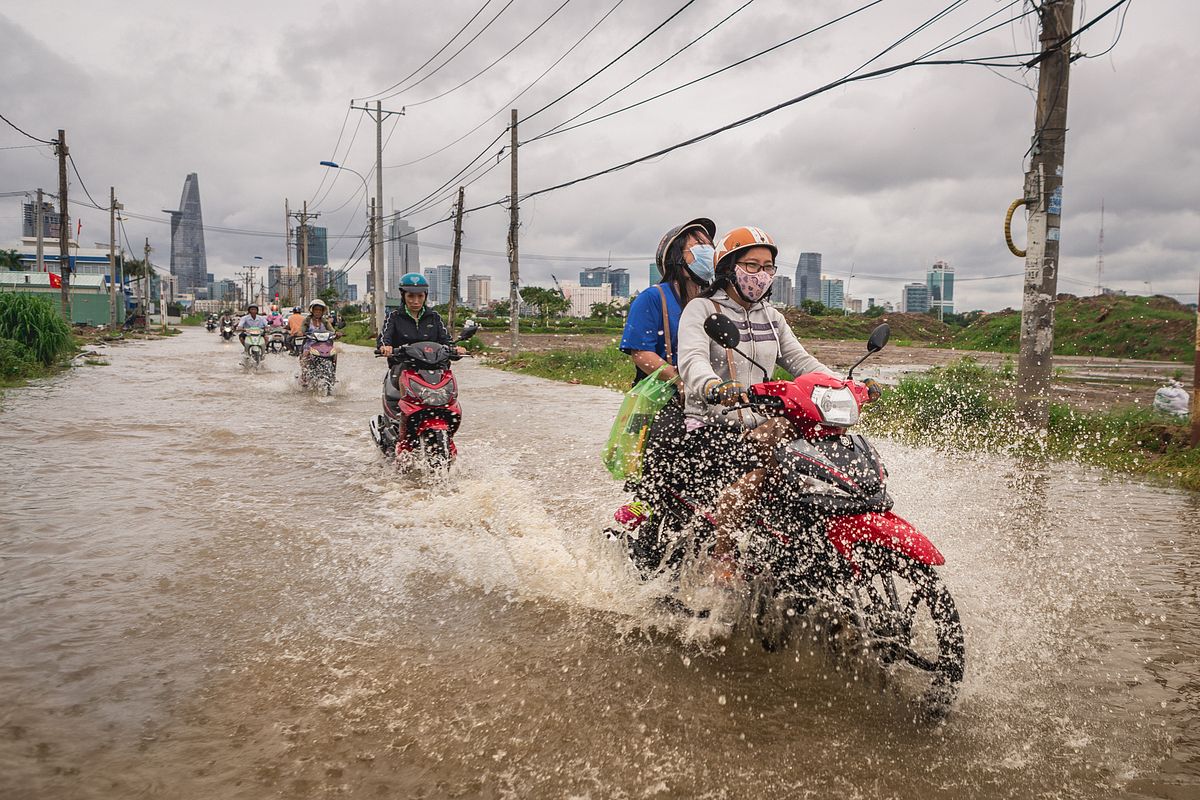A new study highlights the grave flood threat facing Saigon if strong mitigation efforts aren't taken in the coming decades.
'Can coastal cities turn the tide on risking flood risk?' from the McKinsey Global Institute uses Saigon and Bristol in the United Kingdom as case studies in responding to threats from climate change and rising sea levels.
Of Saigon, the authors write that the city "can survive its flood risk today, but its plans for rapid infrastructure expansion and continued economic growth could, if not managed carefully, lead to an increase in risk. The city has a wide range of adaptation options at its disposal but no silver bullet."
Over the next 30 years, city officials plan to build four power plants, nine wastewater processing plants, three water processing plants, four ports, five data centers and several metro lines. This is in addition to countless road projects and massive real estate developments.
These projects have been planned in a current reality in which parts of Saigon frequently flood during the monsoon season, but not to an extent that causes serious economic damage.
"Of the city's 322 communes and wards, 154 have a history of regular flooding," the report says. "However, while flooding has historically caused property damage, threatened safety, and disrupted transportation, it has not been severe enough to prevent the city from achieving high rates of economic growth."
This could change in the future though, the research goes on.
Temperatures are already rising more quickly in the city than surrounding areas due to urban development, while this urbanization also paves over land that once absorbed rain water. Subsidence is also a side effect of this growth, an issue that is already having severe impact in the Mekong Delta.
The report's analysis finds that currently, Saigon faces minimal risk from a so-called "100-year flood": it "would deliver a disruptive but likely manageable impact on Ho Chi Minh City's existing infrastructure. We estimate that 23 percent of the city could flood...infrastructure damage may total US$200 million to US$300 million."
However, by 2050, the authors estimate that the same storm would cause three times as much physical infrastructure damage and 20 times more in knock-on effects such as lost work hours and power outages. Expensive new infrastructure, such as underground metro stations, would be flooded.
The report also addresses a worst-case scenario of 180 centimeters of sea level rise by 2100, in which, without proper mitigation efforts, 66% of Saigon would flood, causing up to US$7.3 billion in damage.
"This scenario is extreme, and the probability of it occurring by 2050 is negligible," the researchers write. "What is important, though, is that infrastructure planned for completion in or shortly before 2050 could experience another step change in risk at some point in 2060 or beyond if significant mitigation does not take place."
The report also discusses adaptation efforts, so the whole thing is well worth reading. City officials have already earmarked US$4.4 billion for flood defenses over the next five years, but some projects are delayed, and far more will need to be spent.
Singapore, for example, expects to spend US$72 billion to counter flooding and sea level rise.















